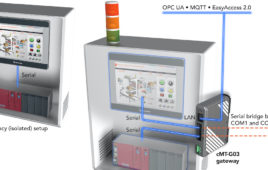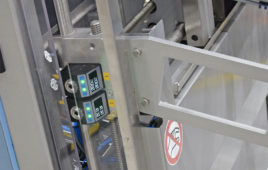In early October, Digi International acquired bluenica, a company focused on temperature monitoring of perishable goods in the food industry. This acquisition brought together the domain expertise of Digi International in the areas of wireless Machine-to-Machine (M2M) connectivity and the Internet of Things (IoT), with the specific perishable food service supply chain expertise of bluenica. The resulting solution is an important example of how IoT is changing an important facet of everyday life – in this case, improving the safety of the food people consume.
Currently, the US has more than 1 million food service businesses in operation. They include restaurants, retail food stores, food vendors and institutions such as schools, hospitals, assisted living, nursing homes and child care centers. All of these food service operations must meet public health requirements created by the Food and Drug Administration (FDA).
One of the most important requirements for food service businesses is to maintain acceptable temperature levels of food in order to limit the spread of harmful bacteria. Bacteria grow most rapidly in the range of temperatures between 40 °F and 140 °F, doubling in number in as little as 20 minutes. This range of temperatures is often called the “Danger Zone.” Control of safe food temperature levels must be maintained throughout the food service supply chain, including transporting, storing or selling/serving perishable food.
Today, the vast majority of these operations are monitored manually – without the aid of equipment or machines capable of independently assessing and reporting on food temperature levels. The current process is inefficient and far from foolproof, as evidenced by periodic outbreaks of bacteria-induced food-borne illnesses.
Digi’s acquisition of bluenica has resulted in a Software-as-a-Service (SaaS) application that provides a much more efficient and cost-effective method of monitoring the temperature of food items throughout the cold chain. Food service operations that previously had to rely on a human being taking regular temperature readings and reporting any temperature out of the acceptable range can now use a subscription-based service that consists of a series of wireless sensors installed in spaces where food temperature must be monitored and transmits the data to a communications gateway that is either cellular enabled or utilizes existing Wi-Fi connections. A simple temperature sensor measures air temperature wherever it is placed, or the temperature of food itself when inserted directly into food items via an approved sterile food-grade casing that bluenica developed, and sends real-time temperature data to the cloud to be processed and stored. Through the cold chain SaaS application, users retrieve the data—including fully compliant reports— on laptops, tablets or smartphones.
Applying this combination of domain expertise in the food service supply chain with M2M communications technology is just one IoT application that can make an important difference and improve the safety of critical commodities. Another potential application is in the area of Health Sciences, specifically in the production and transportation of vaccines.
Through its acquisition of bluenica, Digi International has created a tangible example of IoT adding value back to managers and other decision-makers. An inefficient manual process that requires constant monitoring is being replaced with an efficient system that manages by exception, notifying humans that action is required only when a problem has been detected.
Today, Digi Cold Chain Solutions, the entity that combines Digi/bluenica expertise in the radio frequency (RF) and M2M spaces and encompasses knowledge of the unique demands of the perishable food supply chain, otherwise known as the cold chain, provides real-time information used to manage the safety of the food being consumed in the U.S. In the process, spoilage and loss are being minimized, labor costs are being reduced and organizations are better able to comply with important food safety regulations.
Filed Under: M2M (machine to machine)




